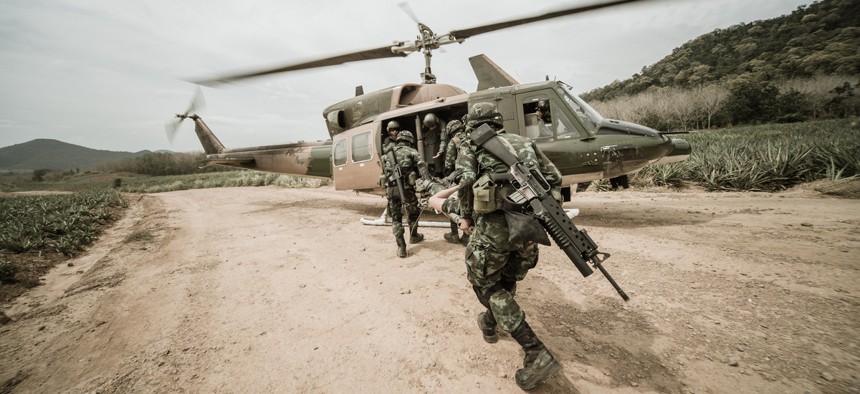Meet The Woman Who’s Making Soldiers More Energy Efficient

ANURAKE SINGTO-ON/Shutterstock.com
On the battlefield, power matters in more ways than you think.
The smartphone in your pocket can connect you to an infinite trove of information. But once the battery dies, it’s little more than a black box with some useless buttons.
Similarly, soldiers could find themselves stranded in the world’s most hostile locales if the advanced technology they rely on runs out of power.
It’s up to Elizabeth Ferry to make sure that doesn’t happen.
As chief of the power division at the Army’s Communications-Electronics Research, Development and Engineering Center, Ferry leads the branch’s efforts to put the most energy on the battlefield in the least cumbersome way possible, overseeing the creation of everything from automated power grids to batteries that recharge as soldiers move.
“It really doesn’t matter how great [a soldier’s] communications system is—or their new radio, or their new weapon—if they don’t have the power and energy to make [them] work,” she told Nextgov. “Energy is a critical enabler of almost all the other capabilities being developed. We have a big job here.”
Though it might not sound as exciting as building new missiles or designing the next tank, Ferry said her team’s work plays a critical role in “every single one” of the Army’s technological priorities.
CERDEC has spent decades innovating how the Army brings energy to the battlefield, and since 2000, Ferry’s team has more than tripled the amount of power soldiers’ primary battery packs can store. In other words, the Army could stretch mission times from 24 to 72 hours without burdening soldiers with any extra weight.
As battery technology improves, the Army continues to increase its demand for energy, which in turn requires CERDEC to keep pushing the limits of energy storage, Ferry said. “We’re always trying to play catch up to make sure that we keep pace” with the Army’s needs.
In addition to making energy storage more efficient, her team is exploring ways to recharge batteries using the energy from soldiers’ footsteps and backpack motion.
To support the Army’s large scale efforts, Ferry’s team continues to develop the Energy Informed Operations microgrid, a system for automating many of the processes for keeping command posts up and running.
The Army conducts many missions out of makeshift bases in the field, which require a steady supply of energy that can be picked up and moved around as needed. While CERDEC doesn’t design the generators that power the stations, the EIO microgrid ensures those generators are being used efficiently and alerts soldiers when issues arise.
At each command post, someone is usually responsible for keeping the power grid running smoothly, which requires manually checking each generator for issues. But Ferry’s team built an application that sends alerts if generators are low on power, overheating or experiencing other problems, which lets soldiers focus on different responsibilities.
The power division’s ultimate goal is making power systems “so intuitive and user-friendly that it’s not something the soldier has to worry about,” Ferry said. The team is also refining a number of predictive applications to enable grids to function largely without the need for human action.
As CERDEC works to bring the grids online, the power division is also building open standards to ensure every part of the system is compatible. Such guidelines would give industry exact details on what the Army needs and make it easier to bring the best technologies on board, Ferry said. Ultimately, she hopes the entire Defense Department will adopt the standards.
“We’re focused on making sure that power and energy are an enabler and not something that holds our Army back,” she said.






